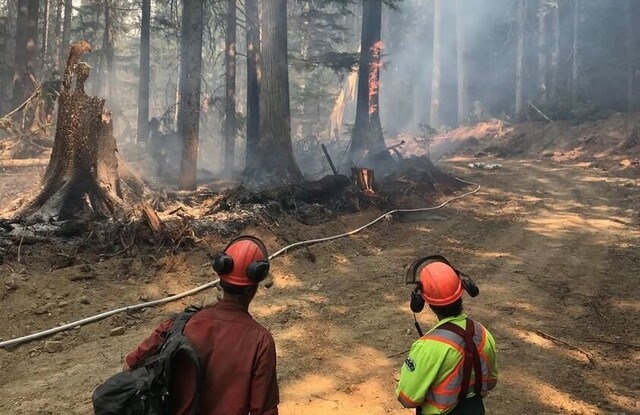The provincial government is planning to spend over half a billion dollars on new resources to prevent, manage and fight wildfires over the next three years, Finance Minister Selina Robinson announced Tuesday on budget day in Victoria.
“For the BC Wildfire Service, this marks a transition toward year-round firefighting and risk mitigation,” Robinson told the Legislative Assembly.
Prompted by one of the costliest wildfire seasons in B.C. history last summer, the government is stepping up measures to prevent future fires with $145 million in additional funding for the BC Wildfire Service and Emergency Management BC.
“Funding will move the BC Wildfire Service from its current reactive model of wildfire response to a more proactive approach and allow it to work on all four pillars of emergency management (prevention and mitigation, preparedness, response, and recovery),” stated the budget document.
“This funding will also improve Emergency Management BC’s ability to prepare and respond to climate-related events, ensure impacted communities are supported during and after events, improve the public alerting system, and help communities with emergency planning,” noted the government.
An additional $98 million over three years is also provided to fund wildfire prevention work and projects and to maintain forest service roads to help the service respond to future forest fires. This will mean more permanent employees working for the service, which largely comprises of seasonal staff.
And $90 million is being injected into the FireSmart program aimed at improving “community and ecological resiliency.”
Finally, the government is increasing its existing annual firefighting budget from $136 million to $199 million, although the 10-year average annual cost has been $324 million.
Last year the province spent $801 million fighting wildfires, according to the updated budget. The season saw the catastrophic loss of the Village of Lytton due to a fire during record-breaking heat combined with drought conditions.
B.C.’s heat wave was widely attributed to climate change and the government states much of this new funding is in response to such changing weather conditions.
“This funding will also improve Emergency Management BC’s ability to prepare and respond to climate-related events, ensure impacted communities are supported during and after events, improve the public alerting system, and help communities with emergency planning,” stated the budget.
The new funding and planning is welcomed by experts, including Mike Flannigan, professor at Thompson Rivers University in Kamloops, a city besieged by wildfire smoke for most of last summer.
“As the old adage goes, an ounce of prevention is worth a pound of cure,” said Flannigan, who noted several Canadian provinces already have year-round wildfire service.
Flannigan expects the funding to support building “fuel breaks,” which are swaths of land cleared of brush and trees intended to stop a wildfire in its tracks. As well, firefighters will be able to conduct more prescribed burns to better manage the trajectory of future fires.
“Our climate is changing and we’re expecting more. On average, we’re going to see a lot more fires. We need to do a lot of prevention and mitigation,” said Flannigan.
The university’s research chair for Predictive Services, Emergency Management and Fire Science emphasized the need for better community planning. For example, he said towns can build sports fields along its forested boundaries. And local governments can and should create enhanced early warning systems, he said.
Lori Daniels, professor in forest ecology at the University of B.C. Faculty of Forestry, also emphasized the need for better community planning, especially for remote, rural areas.
“I was really pleased to hear the minister (Robinson) using the term proactive management,” said Daniels.
She too raised the need for more prescribed burns; her hope is the new funding rejuvenates local expertise in firefighting.
But Daniels cautioned that fire breaks won’t be feasible everywhere given the size of the province and cost of building them.
Daniels said while B.C. has lost a lot of forest, there’s still so much more to protect.
The province has about 60 million hectares of forest. Last year, about 800,000 hectares burned. In 2017 and 2018, 1.2 million hectares and 1.4 million hectares burned, respectively. The region saw a respite in 2020 and 2019 with roughly 36,000 hectares burned.
And while about 5% of the province’s forests have burned in the past five years, creating some natural fire breaks, Daniels said, “I do think we’ll have years in the not so distant future where we burn another million hectares in B.C.”
Both Flannigan and Daniels cautioned that the funding plan, while good, is no guarantee — especially with longer fire seasons becoming the norm, not the exception.
“I’m loath to say it but we aren’t prepared yet,” said Daniels.




